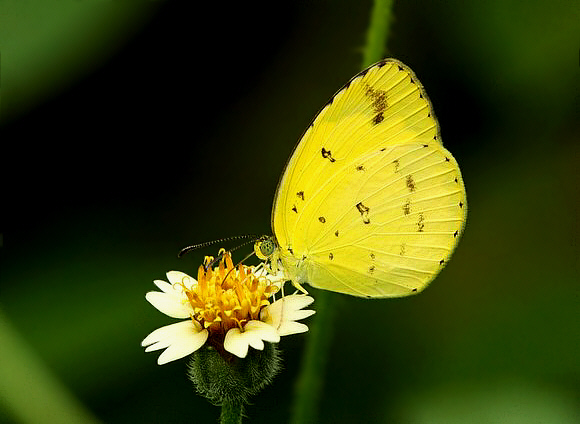
Introduction
The Grass Yellows are all fairly small butterflies, readily recognised by their bright yellow wings and their habit of gathering in small groups on patches of damp sand or soil. Despite their name, none of their caterpillars feed on grasses – the name is derived from the fact that most species are found in disturbed grassy habitats.
Eurema are among the most familiar of tropical butterflies. There are 70 known species worldwide, of which 36 are found in the Neotropical region, 13 in North America, 10 in Africa, 25 in the Oriental region and 10 in Australia / Papua New Guinea. Many are migratory in behaviour and the ranges of several such as hecabe overlap into in 2 or more of the zoogeographical regions.
Eurema alitha has 13 subspecies, found variously in the Philippines, Palawan, n. Borneo, Sulawesi, Java, Bali, Timor, West Irian, Papua New Guinea and most of the islands of the South Pacific. In Australia it occurs in Northern Territory, Western Australia and Queensland.
Habitats
This species inhabits open or disturbed grassy areas including forest clearings at elevations between sea level and about 1000m.
Lifecycle
The egg is skittle-shaped and cream in colour. It is laid singly on the upper surface of leaves of the foodplants. The larva when fully grown is bluish-green above the pale spiracular line and dark green below it. The upper half of each segment is banded with dozens of tiny tubercles from which arise short setae. The larval foodplant in Indonesia and the Philippines is Albizia. In Australia only Glycine (Fabaceae) is used. The pupa is pale green and unmarked. It is formed on a stem of the foodplant or another nearby plant and is attached by the cremaster and a silk girdle.
Adult behaviour
To be completed.
